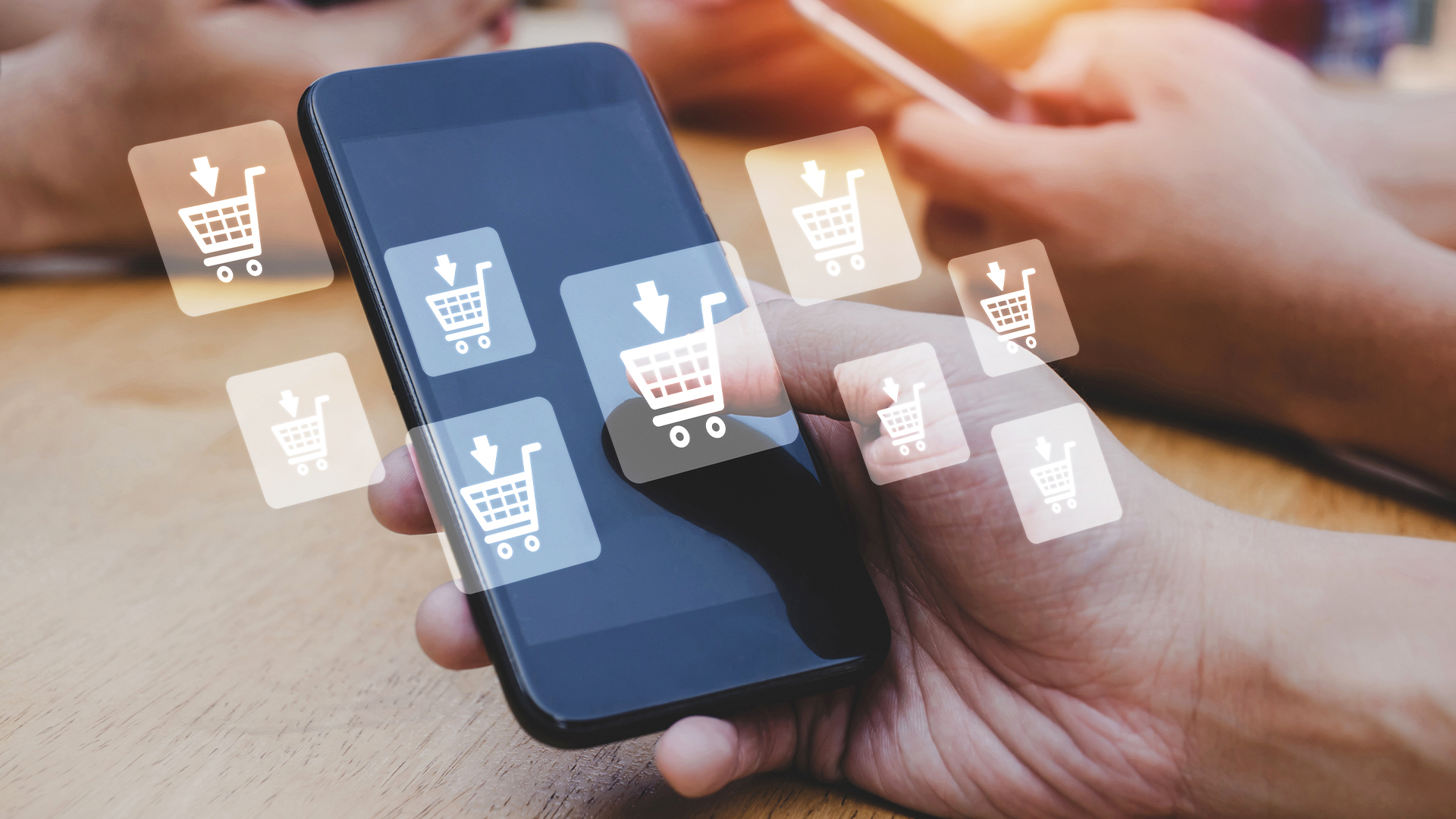
Digital transformation in retail, enhancing customer experience, is the primary ecommerce market growth factor. In 2022, global retail sales reached $27.34 trillion, among which $5.76 trillion accounted for ecommerce retail sales.
According to ResearchAndMarkets, the global ecommerce market is projected to grow by $12.95trn during 2022-2027, accelerating at a CAGR of 27.15%. So how to keep up with this rapid pace?
Today, retailers can make informed decisions about adopting retail software solutions and thus commit to more solid and future-proof digital transformation strategies. Itransition experts have identified four digital transformation trends to consider in 2023.
Social shopping
Not so long ago, brands viewed social networks merely as another marketing channel, effective for reaching out to their target audience with personalized product promotions. Still, if the customer did decide to buy, the purchase tended to take place outside the retailer’s social media account, most likely on their website or at a brick-and-mortar store.
But when consumers shifted to shopping online and began spending more time on social networks than ever during COVID, it presented a unique chance for the brands to step up their social commerce offer and promote and sell their products seamlessly through social media channels.
With its community-like engagement, abundant social proof, and frictionless shopping, social commerce immediately struck a chord with consumers, particularly younger generations longing for novelty and excitement. For retailers, the benefit of social shopping lies in more accessible target audience outreach and authentic relationships that translate into higher conversion rates.
Due to its ease of use and appeal to the young social media-savvy generations, social commerce promises to proliferate and become a dominant online sales channel in the years ahead. So even if you neglected social media earlier, 2023 is the perfect time to venture into the social commerce trend.
For example, the famous singer and successful businesswoman Rihanna dropped a Super Bowl 2023-themed Savage X Fenty merch on social media, serving as her best advertisement. She modeled several items on the brand’s Instagram account, gathering thousands of comments from potential buyers.
Mobile apps
Retail mobile applications are hardly new, but since the beginning of the pandemic, m-commerce has significantly grown in popularity and so far shows no sign of losing momentum.
Needless to say, developing a mobile channel is an absolute must in current circumstances, but how can a brand garner a consumer’s attention? Emerging technologies can become a solid market differentiator for retailers’ mobile apps.
Augmented reality
One considerable shortcoming of m-commerce is its lack of tangibility humans need badly to make a purchasing decision and feel satisfied with the shopping process.
Allowing customers to virtually try on clothes, shoes, and makeup looks or preview how furniture will look in their room, AR bridges the online and in-store shopping experiences and makes the previously monotone process of product discovery and assessment more engaging.
Down the line, this element of excitement, according to Shopify’s findings, translates into a 94% higher conversion rate, which makes all money and effort investments into AR more than worthwhile.
Today, augmented reality (AR) features can be found in the mobile apps of mass-market and luxury fashion brands, beauty and jewelry retailers, and even houseware, sporting goods, and toy merchants.
Voice shopping
Another trend is voice-assisted commerce. Voice assistants offered the convenience of buying anytime, anywhere up a notch, allowing their owners to shop while doing something else, be it work, house chores, or leisure.
Moreover, as a voice commerce tool, mobile virtual assistants appear to edge out smart speakers because the latter has no screen and does not allow one to see the purchase. All this, coupled with the growing appreciation for the speed and convenience of voice commerce, offers a viable growth avenue for retail brands’ mobile apps.
Carrefour, a French supermarket chain, is a trailblazer in this field. In the summer of 2020, the company launched a voice-based grocery shopping service developed in cooperation with Google. Compatible with mobile phones and smart speakers, the service enables customers to search for items in Carrefour’s online store, add them to the shopping cart, pay for the order, and schedule its delivery via voice commands.
Alternative payment methods
The shift to online commerce compelled consumers to change their habits and pivot to digital payment channels. More innovative payment technologies, such as contactless payments, also gained recognition across customer segments, shifting from “gimmicks” to “must-haves”.
Contactless payments proved a boon to customers who had to or still preferred to shop in person. Near-field communication (NFC), the underlying no-touch payment technology, facilitates interaction between the terminal and the bank card or smart device over a short distance.
Long-neglected QR codes are also on the rise. Easily scanned with the default camera app, QR code payment schemes prove particularly frictionless for shoppers. Moreover, compared to NFC technology, QR has low adoption costs, making it an attractive option for small businesses or retailers lacking card payment infrastructure.
According to Celero Commerce, over 80% of US consumers reported using contactless payment methods last year. Meanwhile, merchants support the trend, with 81% planning to add contactless payments as a permanent option.
Fraud prevention
The rise of fraud came as the major downside of the explosive growth of ecommerce. To safeguard their business against the heightened threat without creating additional friction, retailers plan to enhance their fraud detection mechanisms in 2023.
At the moment, machine learning in retail is sought after as the most viable technology for thwarting human-emulating fraud scripts. ML algorithms can assess transactions in real-time against historical data and numerous criteria and accurately detect anomalous activities that indicate a fraud attempt to halt them timely. What makes machine learning in ecommerce an even more invaluable tool to fight fraud is that the software continuously teaches itself and thus can identify even new and obscure scam schemes.
Closing thoughts
The COVID pandemic marked a significant turning point for retail, fast-forwarding the industry’s innovations. Now, when there is no need for urgent recovery efforts and speedy rollouts, businesses can step back to assess the shifts in customer behavior and recent retail tech advancements and work out a more long-term digital transformation strategy.
Consumers’ quest for convenient and mobile-first experiences and concerns about health and cybersecurity have shaped the retail landscape for years to come. Therefore, solutions that deliver on these needs prove most worthwhile to adopt today.























